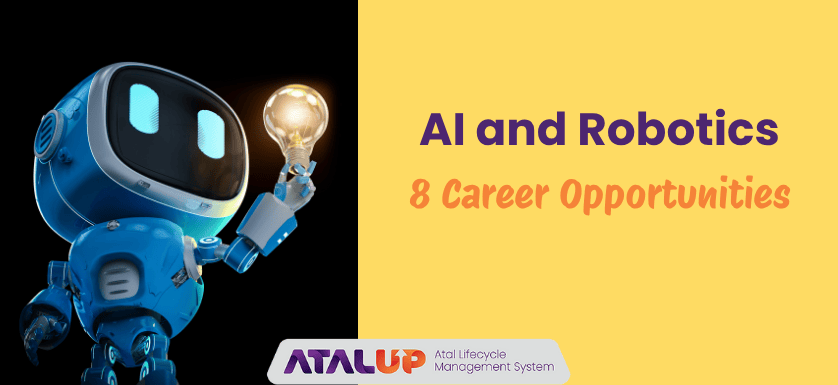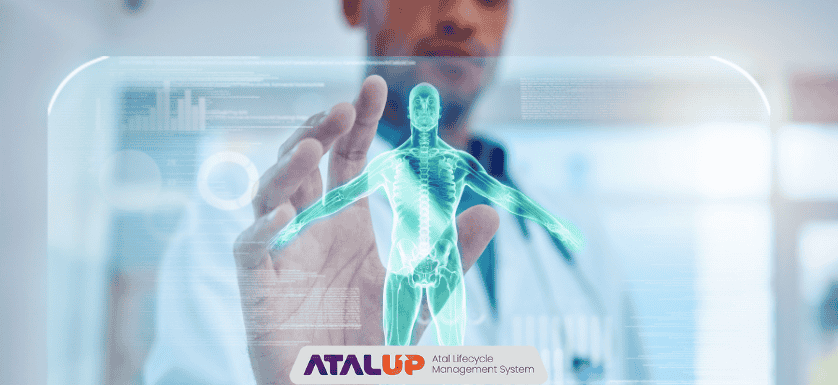
We live in a world where machines don’t just work, they think. From designing social media ads to managing billion-dollar supply chains, companies now depend on AI and Robotics more than ever. AI is writing code, generating art, responding to emails, and even predicting diseases. Robotics is automating warehouses, performing surgeries, and delivering goods.
In this rapidly shifting landscape, it’s no longer enough to just know what AI and robotics are; students need to explore them hands-on. With the Atal Tinkering Labs (ATL) initiative, Indian schools have the chance to equip their students for a future that’s already here. And with platforms like ATALUP, this transformation becomes easy, structured, and scalable.
What is AI and Robotics?
Artificial Intelligence (AI) is the science of making machines “smart.” It allows systems to think, learn, and make decisions. Common examples include:
- ChatGPT – for text generation
- DALL·E – for creating images from prompts
- Google Bard and Claude AI – for knowledge assistance
- AI in ERP tools like Zoho or Salesforce for automation
Robotics is the science of building machines that can move, sense, and act. Some cutting-edge examples:
- Boston Dynamics’ Spot – a robot dog used in industries
- Tesla Optimus – a humanoid robot
- Da Vinci Robot – used in robotic surgeries
- AI drones used in agriculture and defense
When combined, AI and Robotics create intelligent machines that not only move but also think.
Difference Between AI and Robotics
Let’s explore the difference between AI and robotics in a simpler manner.
| Aspect | AI | Robotics |
| What it is | Software that mimics human intelligence | Hardware that performs tasks physically |
| Key purpose | Analyze, learn, predict, decide | Sense, move, act in the real world |
| Can they exist without each other? | Yes – like ChatGPT (pure AI) | Yes – like a toy robot (no AI) |
| Combined Example | AI-powered self-driving car or drone | – |
AI and Robotics Engineering: Career Options for the Future
AI and Robotics Engineering are booming, and students exploring them early will find a wide range of future-ready careers. Some top career paths include:
1. AI Engineer
An AI Engineer designs and builds intelligent systems that can make decisions like humans. They work with machine learning models, natural language processing (like ChatGPT), and computer vision.
Where they work: Tech companies, healthcare startups, e-commerce platforms
Why it matters: AI Engineers build the brains behind smart assistants, fraud detection tools, and self-driving cars.
2. Robotics Engineer
A Robotics Engineer builds physical machines, robots that can move, lift, sense, and respond. This involves mechanical design, electronics, control systems, and embedded programming.
Where they work: Manufacturing, defense, medical, agriculture
Why it matters: They create everything from robotic arms on factory floors to rescue bots in disaster zones.
3. Machine Learning Engineer
This role focuses on training machines to learn from data. They work with algorithms that can predict, classify, or automate decisions without being explicitly programmed.
Where they work: Finance, logistics, edtech, healthcare
Why it matters: They help businesses make smarter decisions, like detecting diseases early or predicting stock trends.
4. Data Scientist
Data Scientists analyze large volumes of data to find patterns and insights. They use AI tools to turn raw data into meaningful information for business strategies.
Where they work: Government, tech companies, consulting firms
Why it matters: Every organization today needs data-driven decisions, and Data Scientists lead that movement.
5. Automation Engineer
Automation Engineers build systems that reduce manual tasks using sensors, robots, or software. In factories, they create smart assembly lines; in offices, they design process bots.
Where they work: Manufacturing, logistics, IT services
Why it matters: They make systems more efficient, saving time and costs across industries.
6. Cognitive Roboticist
This is a niche role combining neuroscience, AI, and robotics. These experts work on robots that can “think” and adapt, like AI companions, humanoids, or therapy robots.
Where they work: R&D labs, healthcare robotics, universities
Why it matters: They bring emotion, reasoning, and learning to robots, making machines more human-aware.
7. AI in Healthcare Specialist
This career focuses on applying AI in hospitals and clinics. From diagnosing illnesses using scans to planning robotic surgeries, these specialists work with tech that saves lives. Organizations are looking for different ways of involving AI in the healthcare industry.
Where they work: Hospitals, med-tech startups, research labs
Why it matters: AI in healthcare is changing lives, making diagnoses faster, surgeries safer, and treatment more personalized.

8. AI-UX Designer
AI is only useful when people can interact with it easily. AI-UX Designers create the experience behind AI tools, like chatbot flows, voice assistants, and predictive dashboards.
Where they work: App companies, product design firms, startups
Why it matters: They ensure AI doesn’t feel like a robot, but like a helpful, intuitive guide.
These careers in AI and Robotics Engineering are not just tech-focused; they’re future-proof, high-paying, and growing across sectors.
How ATALUP Helps Schools Teach AI and Robotics
Schools with Atal Tinkering Labs are already taking steps in the right direction. But managing these labs, aligning them with AI learning, and using them efficiently can be tough.
That’s where ATALUP comes in.
ATALUP helps schools:
- Set up labs with AI and robotics tools
- Train teachers to conduct STEM and AI sessions
- Organize projects where students build basic robots or AI-based models
- Track student progress and lab usage in a structured way
By partnering with ATALUP, schools don’t just build a lab; they create a complete environment where students can explore AI and Robotics through hands-on projects.
Final Words: Future-Ready Starts Today
AI and Robotics are not just a tech trend; they’re the future. With the right tools and training, even students from small towns can lead in global innovation.
ATALUP makes this journey easy for schools by simplifying the process, boosting learning, and creating a culture of real-world problem-solving.
Let’s prepare students not just to learn about the future, but to build it.